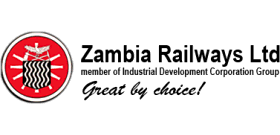 Zambia government recaplitalizes Zambia Railways
Zambia government recaplitalizes Zambia Railways
The Zambian government is actively pursuing an accelerated strategy to secure additional grant funding for the comprehensive, long-term refurbishment of its railway system. This system stretches from Chingola, located in the heart of the nation's copper mining region known as the Copperbelt, all the way to Livingstone, a city situated near the Zimbabwean border.
The primary operational areas of Zambia Railways encompass the routes from Livingstone to Chililabombwe in the Copperbelt, Livingstone to Mulobezi, and Chipata to Mchinji.
Situmbeko Musokotwane, the Minister of Finance and National Planning, made it clear in his 2025 budget speech that the government, with the backing of its cooperative partners, is fully committed to rejuvenating the Zambia Railways system in a systematic and cost-efficient manner. The ultimate objective of this initiative is to enhance track speed, upgrade signalling systems, and secure the necessary funding for long-term investments, as outlined by the minister.
Musokotwane also revealed that the government is currently in talks with cooperative partners to explore the possibility of receiving support for rail wagons and locomotives. The strategic business plan for the period of 2024-2028, set forth by the company, aims to secure a substantial capitalisation of US$248 million. This funding will be directed towards operational and capital expenditures throughout the duration of the strategy.
Zambia has already taken a significant step forward by signing a memorandum of understanding with the governments of China and Tanzania. This agreement is aimed at the rehabilitation and modernisation of the infrastructure and equipment of the Tanzania-Zambia Railway Authority (TAZARA). Musokotwane stated that once the refurbishment is completed, the tonnage on the TAZARA railway line is expected to surge to 2.5 million metric tonnes, a significant increase from the current half a million metric tonnes per annum.
A market study conducted by Zambia Railways in 2022 revealed that the market size for heavy and bulk cargo along the rail line is a staggering 21 million tonnes. At present, ZRL transports approximately 800,000 metric tonnes per annum, which equates to a 4% share of the market. The company handles a diverse range of cargo, contributing to several of Zambia's key economic sectors, including but not limited to sugar, wheat, mining, energy, construction, and manufacturing.
In addition to the railway plans, Musokotwane mentioned that the government has intentions to construct 610km of roads, which includes a highway leading to the Tanzanian border.
Musokotwane also highlighted that the government has successfully concluded negotiations with the Millennium Challenge Corporation, a United States Government agency, to secure grant financing of US$458 million. This grant will be utilised for the rehabilitation and maintenance of 338km of road.
The government, according to Musokotwane, has shown that Public-Private Partnerships (PPPs) can yield positive results in infrastructure development. Through the PPP model, the government has signed off on seven projects, covering a total distance of 838km.
Musokotwane confirmed that the Chingola-Kasumbalesa Road, which leads to the border with the Democratic Republic of Congo (DRC), is now fully operational. Furthermore, work on the Lusaka-Ndola Dual Carriageway, Mufulira-Mokambo Road, and the Ndola-Mufulira Road, as well as the access road to Sakania—all of which lead to the DRC border—are progressing as planned.
